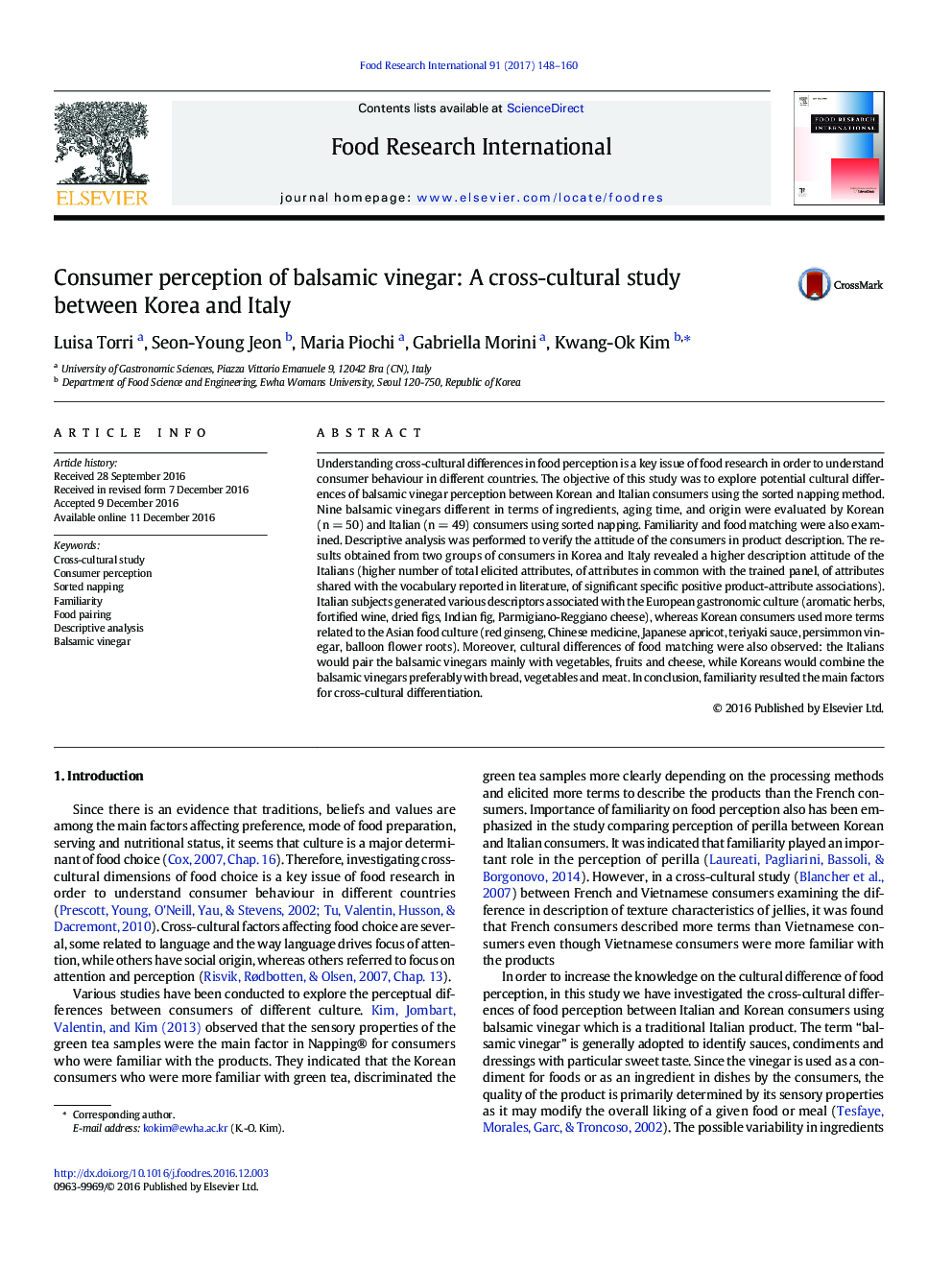| Article ID | Journal | Published Year | Pages | File Type |
|---|---|---|---|---|
| 5767881 | Food Research International | 2017 | 13 Pages |
â¢Perception differences were shown between Koreans and Italians with sorted napping.â¢Italians showed greater description ability of various balsamic vinegars than Koreans.â¢Familiarity seemed to have major impact on cross-cultural perception of the samples.â¢Koreans and Italians chose different kinds of food to be paired with balsamic vinegars.
Understanding cross-cultural differences in food perception is a key issue of food research in order to understand consumer behaviour in different countries. The objective of this study was to explore potential cultural differences of balsamic vinegar perception between Korean and Italian consumers using the sorted napping method. Nine balsamic vinegars different in terms of ingredients, aging time, and origin were evaluated by Korean (n = 50) and Italian (n = 49) consumers using sorted napping. Familiarity and food matching were also examined. Descriptive analysis was performed to verify the attitude of the consumers in product description. The results obtained from two groups of consumers in Korea and Italy revealed a higher description attitude of the Italians (higher number of total elicited attributes, of attributes in common with the trained panel, of attributes shared with the vocabulary reported in literature, of significant specific positive product-attribute associations). Italian subjects generated various descriptors associated with the European gastronomic culture (aromatic herbs, fortified wine, dried figs, Indian fig, Parmigiano-Reggiano cheese), whereas Korean consumers used more terms related to the Asian food culture (red ginseng, Chinese medicine, Japanese apricot, teriyaki sauce, persimmon vinegar, balloon flower roots). Moreover, cultural differences of food matching were also observed: the Italians would pair the balsamic vinegars mainly with vegetables, fruits and cheese, while Koreans would combine the balsamic vinegars preferably with bread, vegetables and meat. In conclusion, familiarity resulted the main factors for cross-cultural differentiation.
Graphical abstractDownload high-res image (82KB)Download full-size image
